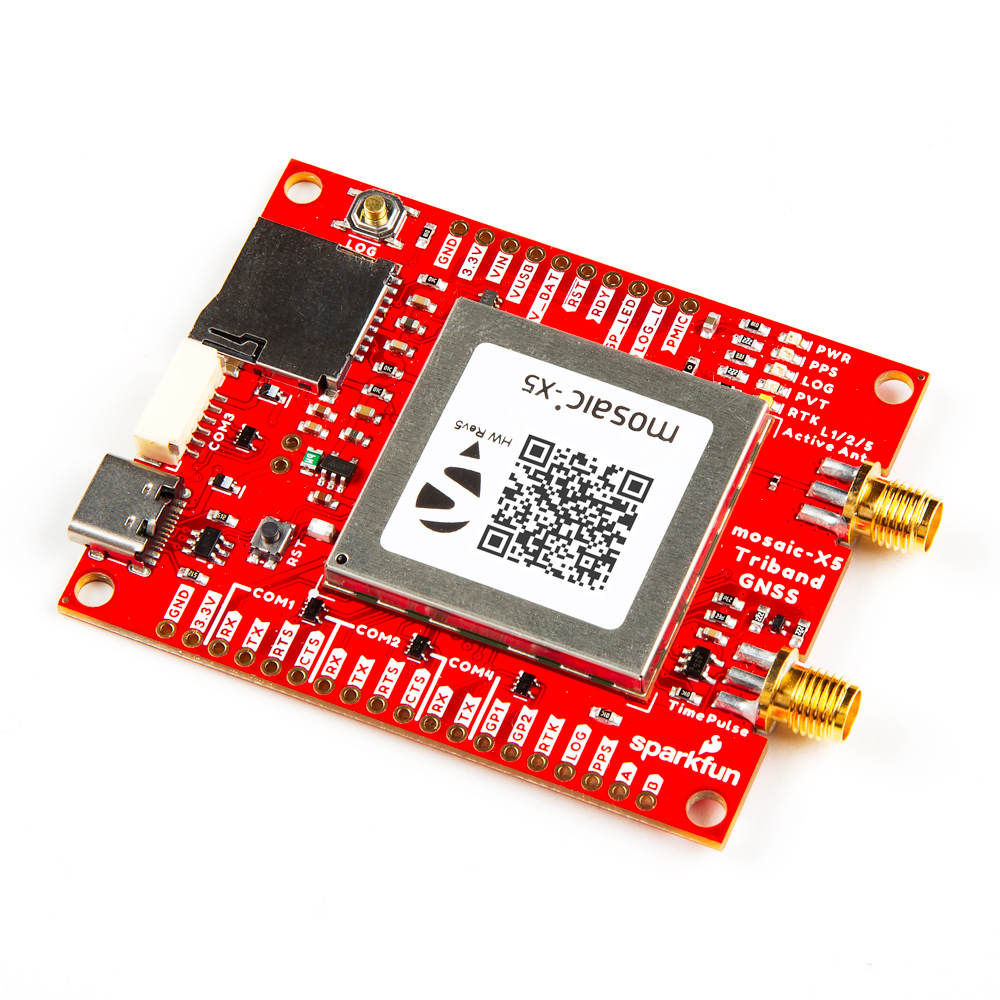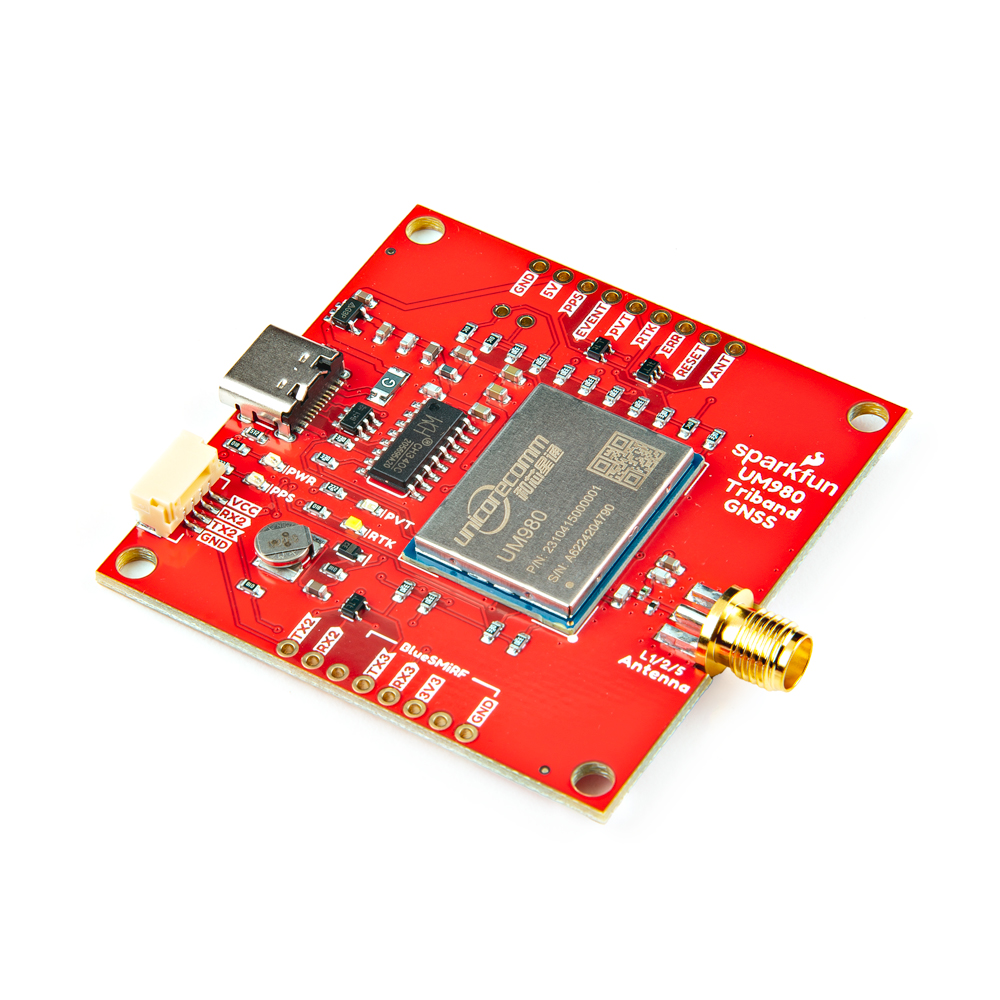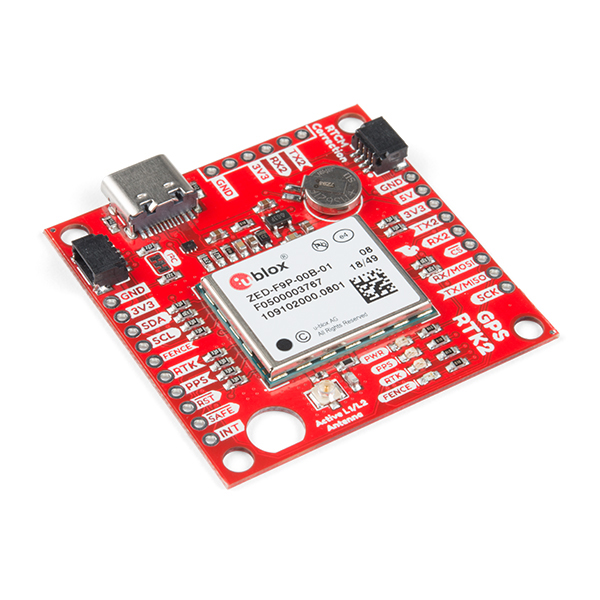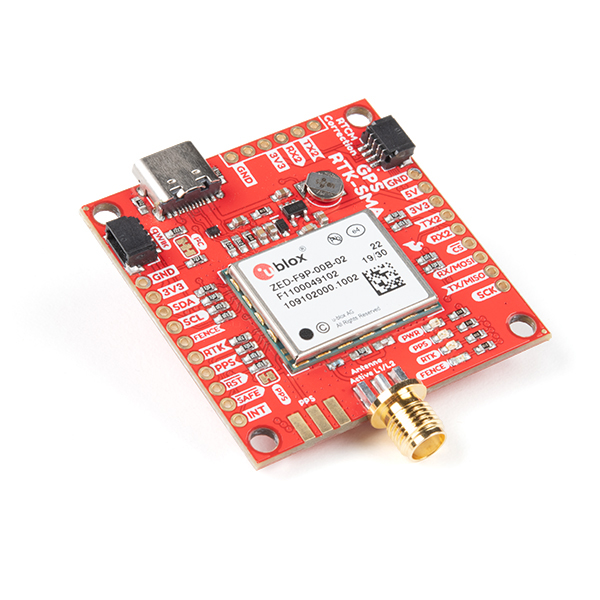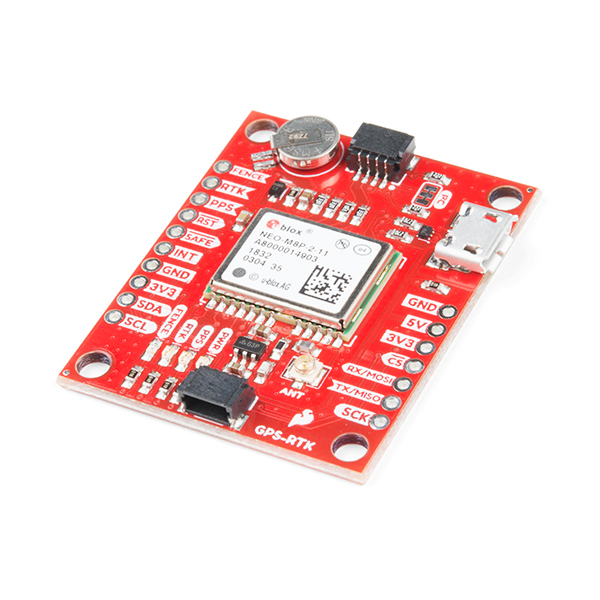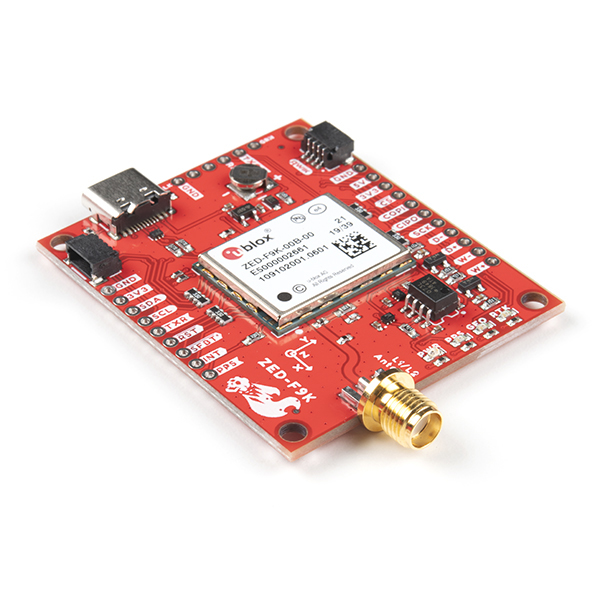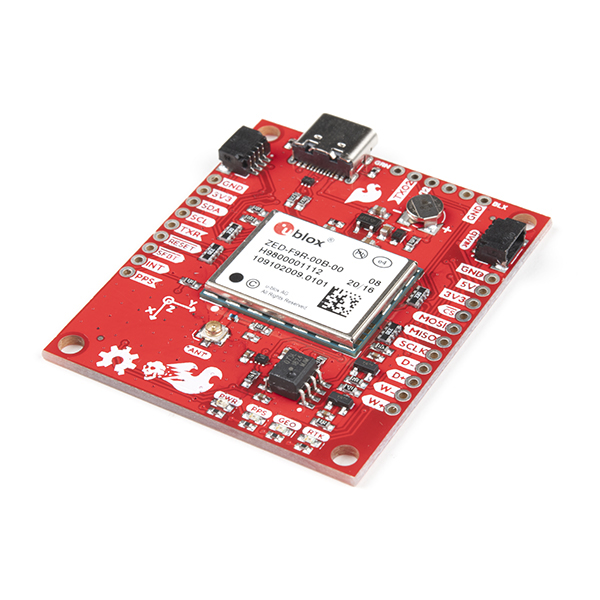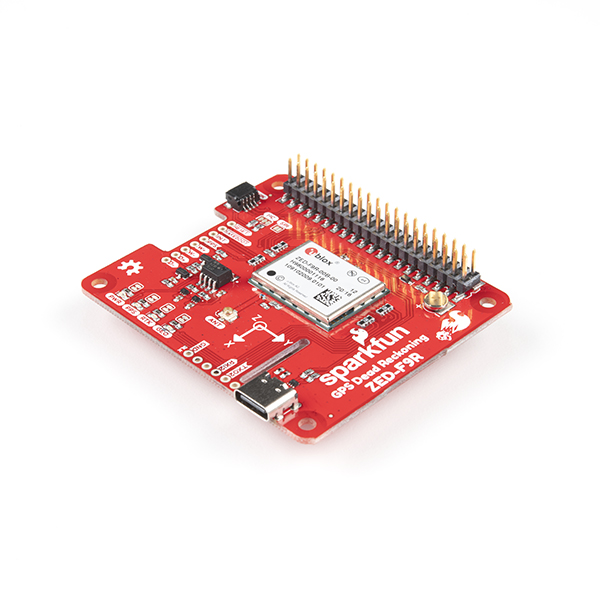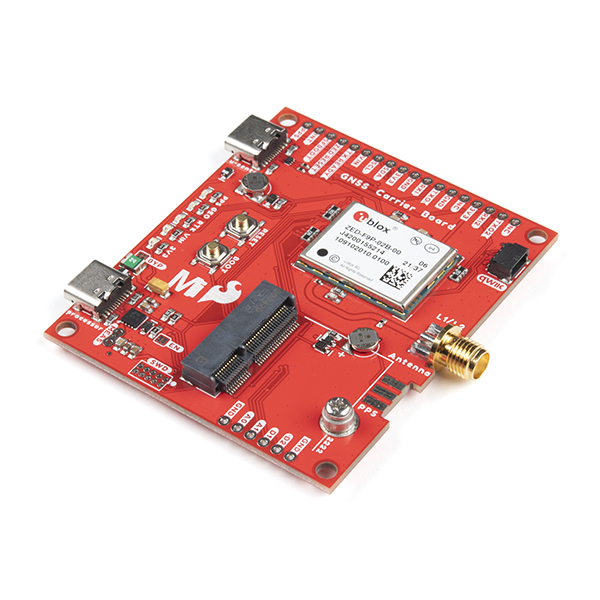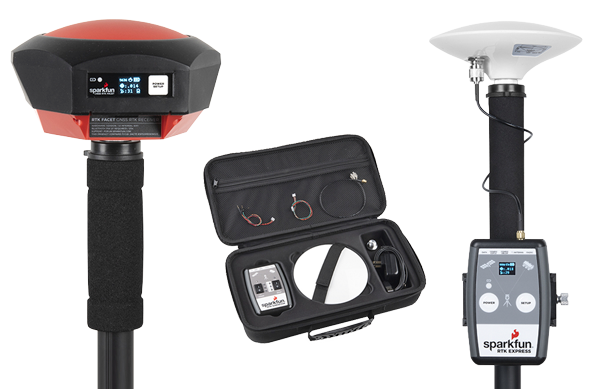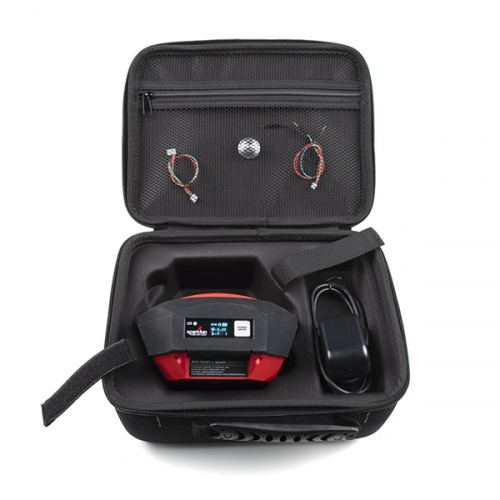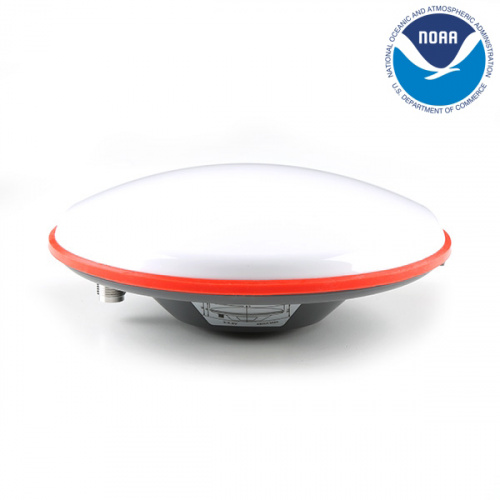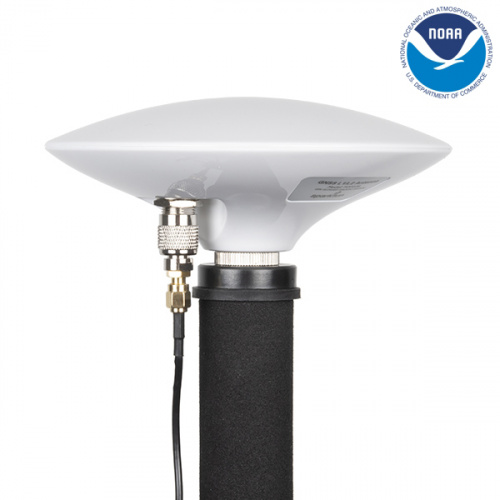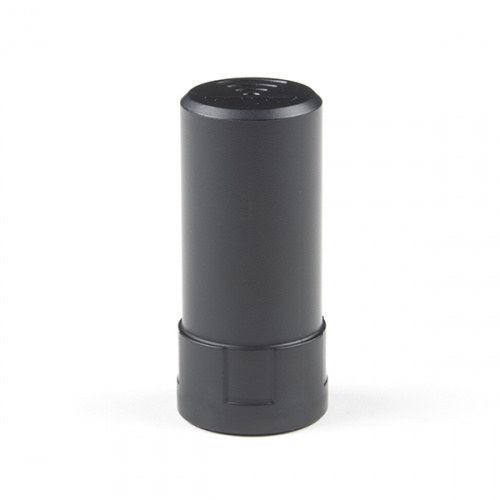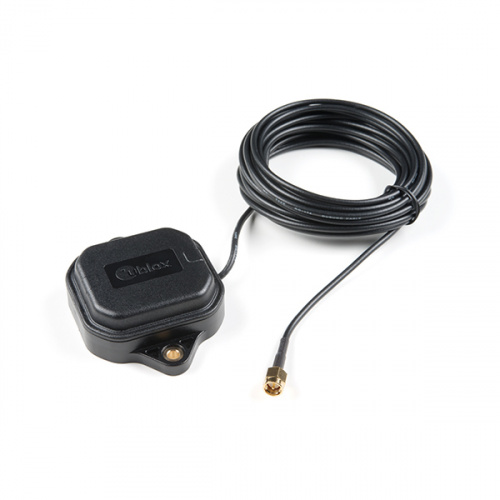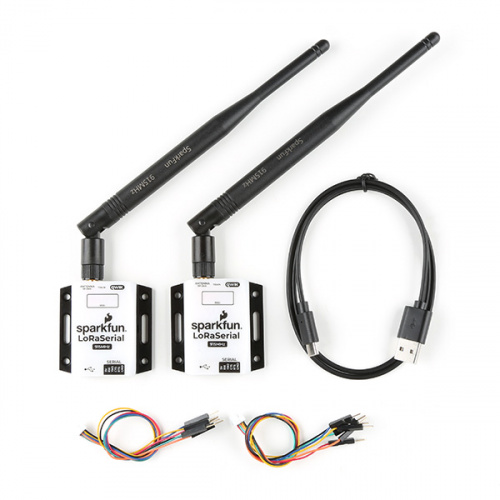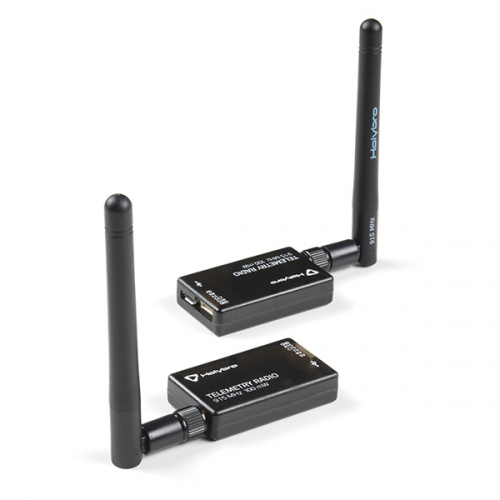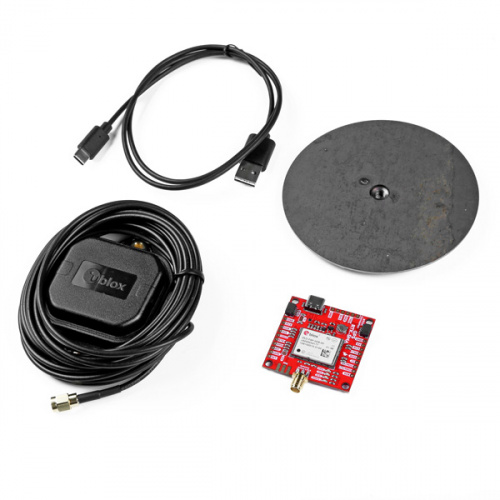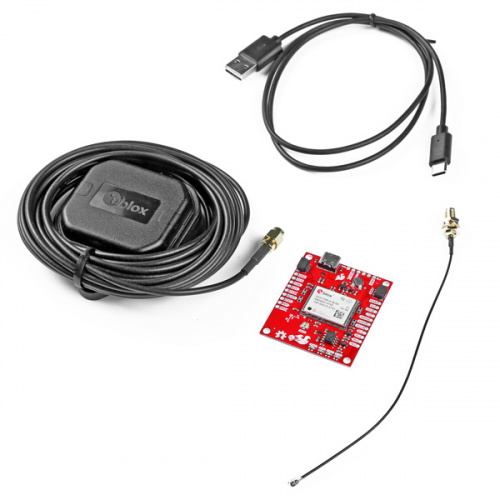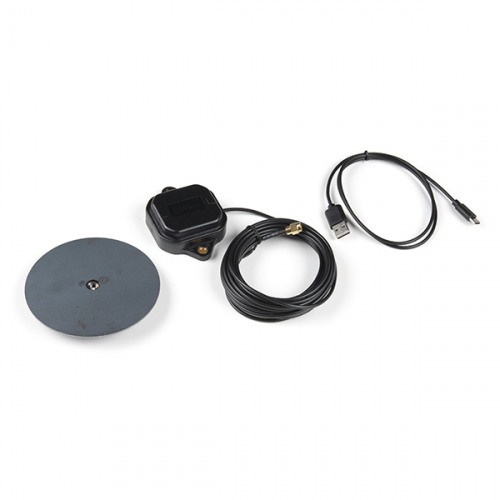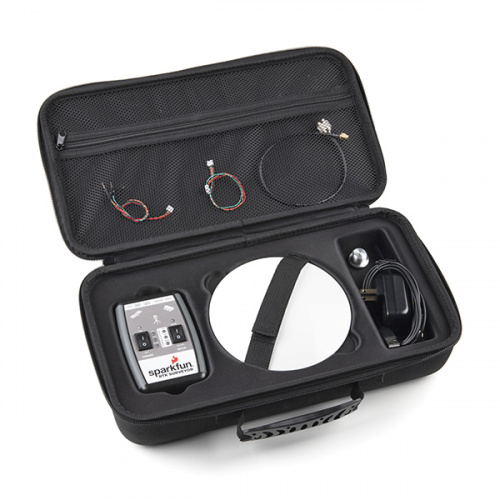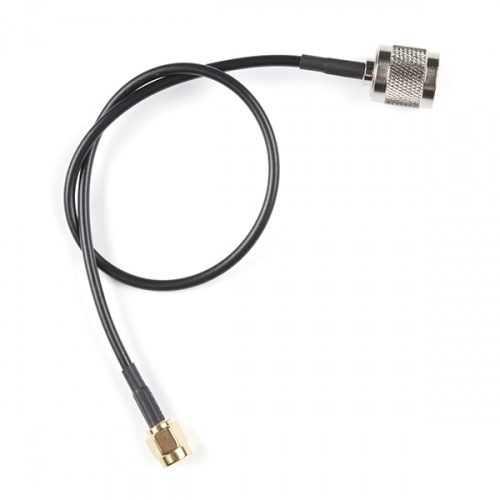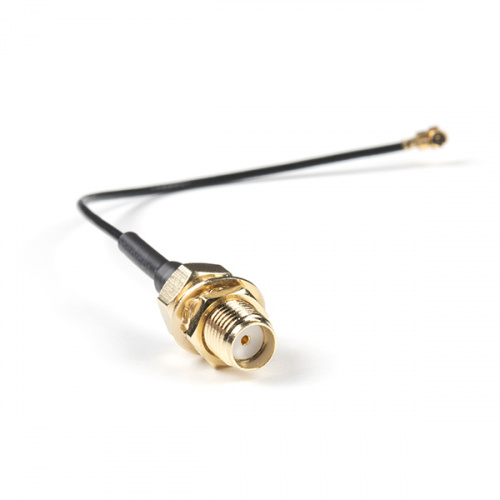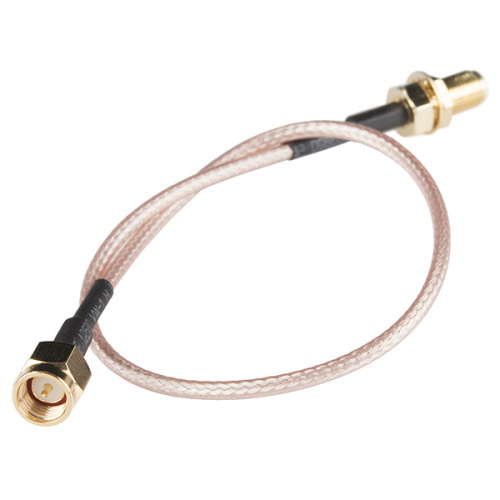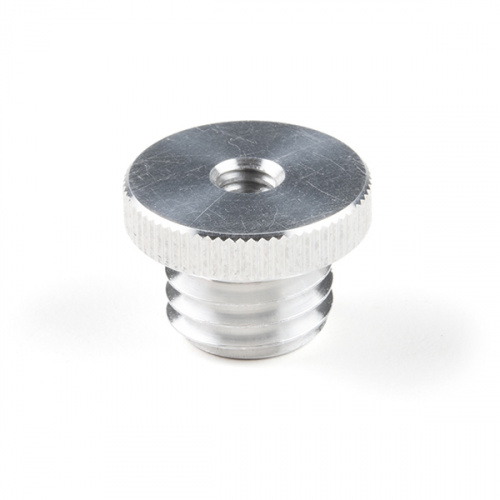
If you're in need of high precision positioning, look no further than utilizing the power of RTK. What used to be very expensive and limited to certain professions is now more affordable and readily available to everyone.
View our RTK Receiver BoardsWhat is RTK, anyway?
RTK is short for real-time kinematics. A GNSS receiver capable of RTK takes in the normal signals from the Global Navigation Satellite Systems along with a correction stream to achieve millimeter-level positional accuracy.
Why is RTK necessary for accurate measurements?
The simple explanation is that a lot can happen to the signals coming from GNSS satellites before they reach ground level. Remember, the GPS satellites are very far away - about 20,000km or 12,000 miles away. Since a GNSS receiver pinpoints location by calculating the distance between you and satellites, everything comes down to timing. Geomagnetic storms cause slight timing delays which can cause location errors. Also, relativistic effects cause orbiting clocks to tick slightly faster than they would on earth. The mere microsecond differences between orbiting clocks and clocks on earth can add up to inaccuracies. RTK corrections help fix these inaccuracies by sending correction data from "surveyed-in" base stations or even geosynchronous satellites!
What is needed to utilize the accuracy of RTK corrections?
There are two main things that you'll need in order to use RTK:
- A GNSS receiver capable of receiving and incorporating RTCM correction data. View receiver boards
- A source of RTCM correction data.
Similar to most any GNSS receiver, a receiver capable of receiving RTK corrections takes GNSS location data from GPS (USA), GLONASS (Russia), Beidou (China), and Galileo (Europe) satellites. On top of these signals, an RTK receiver takes in an RTCM correction stream to calculate your location with 1cm accuracy in real time. RTCM is technically just a government-created protocol that is now used to signify the bytes of correction data related to GNSS timing anomalies. These bytes of data are what allow us to calculate down to millimeter-level accuracy. If you want a deeper dive into learning about RTK, see our What is GPS RTK? tutorial to learn more.
What is GPS RTK?
September 14, 2018
Learn about the latest generation of GPS and GNSS receivers to get 14mm positional accuracy!

Compare RTK Receiver Boards
Achieving accuracy on a millimeter scale requires the right equipment. All of SparkFun's boards listed below are capable of receiving RTK corrections. Also, each SparkFun RTK Development Board has it's own hookup guide to show you how to make it all work.
Triband GNSS RTK Breakout - mosaic-X5
Utilizing the mosaic-X5 module from Septentrio, this professional grade triband (L1/L2/L5) GNSS receiver board for centimeter-level precision.
| Receiver | Antenna Connector | Fix Time | Dimensions | Band Reception | Application |
|---|---|---|---|---|---|
| Septentrio mosaic-X5 |
SMA | 45s (cold) 20s (warm) 1s reacquisition |
2in x 2.5in | L1, L2, L5 | Rover or Base |

Triband GNSS RTK Breakout - UM980
This triband GNSS Breakout features the UM980 RTK position module from Unicore Communications.
| Receiver | Antenna Connector | Fix Time | Dimensions | Band Reception | Application |
|---|---|---|---|---|---|
| Nebulas IV™ | SMA | 30s (cold) 20s (warm) 5s (hot) |
2in x 2in | L1, L2, L5 | Rover or Base |

GPS-RTK2 Board - ZED-F9P (Qwiic)
A top-of-the-line development board for high accuracy GNSS location solutions including RTK that is capable of millimeter-level, three-dimensional accuracy with a U.FL connector.
| Receiver | Antenna Connector | Fix Time | Dimensions | Band Reception | Application |
|---|---|---|---|---|---|
| u-blox ZED-F9P | U.FL | 25s (cold), 2s (hot) | 1.71in x 1.7in | L1C/A and L2C | Rover or Base |

GPS-RTK-SMA Breakout - ZED-F9P (Qwiic)
A top-of-the-line development board for high accuracy GNSS location solutions including RTK that is capable of millimeter-level, three-dimensional accuracy with an SMA connector.
| Receiver | Antenna Connector | Fix Time | Dimensions | Band Reception | Application |
|---|---|---|---|---|---|
| u-blox ZED-F9P | SMA | 25s (cold), 2s (hot) | 1.71in x 1.7in | L1C/A and L2C | Rover or Base |

GPS-RTK Board - NEO-M8P-2 (Qwiic)
A powerful development board for the NEO-M8P-2 module from u-blox that can achieve horizontal accuracy within one inch.
| Receiver | Antenna Connector | Fix Time | Dimensions | Band Reception | Application |
|---|---|---|---|---|---|
| u-blox NEO-M8P-2 | U.FL | 29s (cold), 1s (hot) | 1.6in x 1.3in | L1C/A | Rover or Base |

GNSS-RTK Dead Reckoning Breakout - ZED-F9K (Qwiic)
This highly accurate, Automotive Grade development board uses a u-blox ZED-F9K module in conjunction with 3D IMU sensor, wheel ticks, a vehicle dynamics model, correction data, and GNSS measurements to maintain positional accuracy even in poor signal conditions.
| Receiver | Antenna Connector | Fix Time | Dimensions | Band Reception | Application |
|---|---|---|---|---|---|
| u-blox ZED-F9K | SMA | 26s (cold), 2s (hot) | 2.40in 1.70in | L1C/A, L2C | Rover |

GPS-RTK Dead Reckoning Breakout - ZED-F9R
This highly accurate, Professional Grade development board uses a u-blox ZED-F9R module in conjunction with 3D IMU sensor, wheel ticks, a vehicle dynamics model, correction data, and GNSS measurements to maintain positional accuracy even in poor signal conditions.
| Receiver | Antenna Connector | Fix Time | Dimensions | Band Reception | Application |
|---|---|---|---|---|---|
| u-blox ZED-F9R | U.FL | 26s (cold), 2s (hot) | 2.40in 1.70in | L1C/A, L2C | Rover |

GPS-RTK Dead Reckoning pHAT for Raspberry Pi
This highly accurate, Professional Grade Raspberry Pi pHAT uses a u-blox ZED-F9R module in conjunction with 3D IMU sensor, wheel ticks, a vehicle dynamics model, correction data, and GNSS measurements to maintain positional accuracy even in poor signal conditions.
| Receiver | Antenna Connector | Fix Time | Dimensions | Band Reception | Application |
|---|---|---|---|---|---|
| u-blox ZED-F9R | U.FL | 26s (cold), 2s (hot) | 2.56in 2.22in | L1C/A, L2C | Rover |

MicroMod GNSS Carrier Board (ZED-F9P)
Utilizing MicroMod's ability to choose your own Processor Board, this highly accurate GNSS development board uses u-blox's ZED-F9P module for millimeter, three-dimensional accuracy.
| Receiver | Antenna Connector | Fix Time | Dimensions | Band Reception | Application |
|---|---|---|---|---|---|
| u-blox ZED-F9P | SMA | 25s (cold), 2s (hot) | 2.60in x 2.24in | L1C/A, L2C | Rover |

Looking for a more off-the-shelf solution for RTK positioning?
SparkFun has a lineup of enclosed, affordable and ready-to-use GNSS receivers and kits that can be used as base stations or rovers for millimeter-level positioning. No programming required!
Learn about our RTK SurveyorsRTK Use Cases
There's certainly no right or wrong way to utilize RTK corrections to achieve extreme accuracy, but the three listed below are some of the more common setups used out in the real world.
Base Station + Rover + Radio/Phone
If you don't mind setting up your own base station and need maximum portability then this may be the solution for you.
With this setup you would build your own base station or use the SparkFun RTK Reference Station and let it "survey in" for around 24 hours. As long as your rover is within ~20km of your base station, then your rover will receive absolute accuracy. Corrections are sent from the base to the rover via a radio connection or cell phone. This method is also very useful for very accurate relative distance (the distance between the base and the rover) with a much quicker "survey-in" time of ~60 seconds.
Pros:
- Very accurate (down to 10mm horizontal positioning)
- Super fast (less than 2 seconds for RTK fix)
- Relatively inexpensive
Cons:
- Must be within ~20km of the base
- Setup and maintain of the base
- Wifi signal must stay on if using cell phone
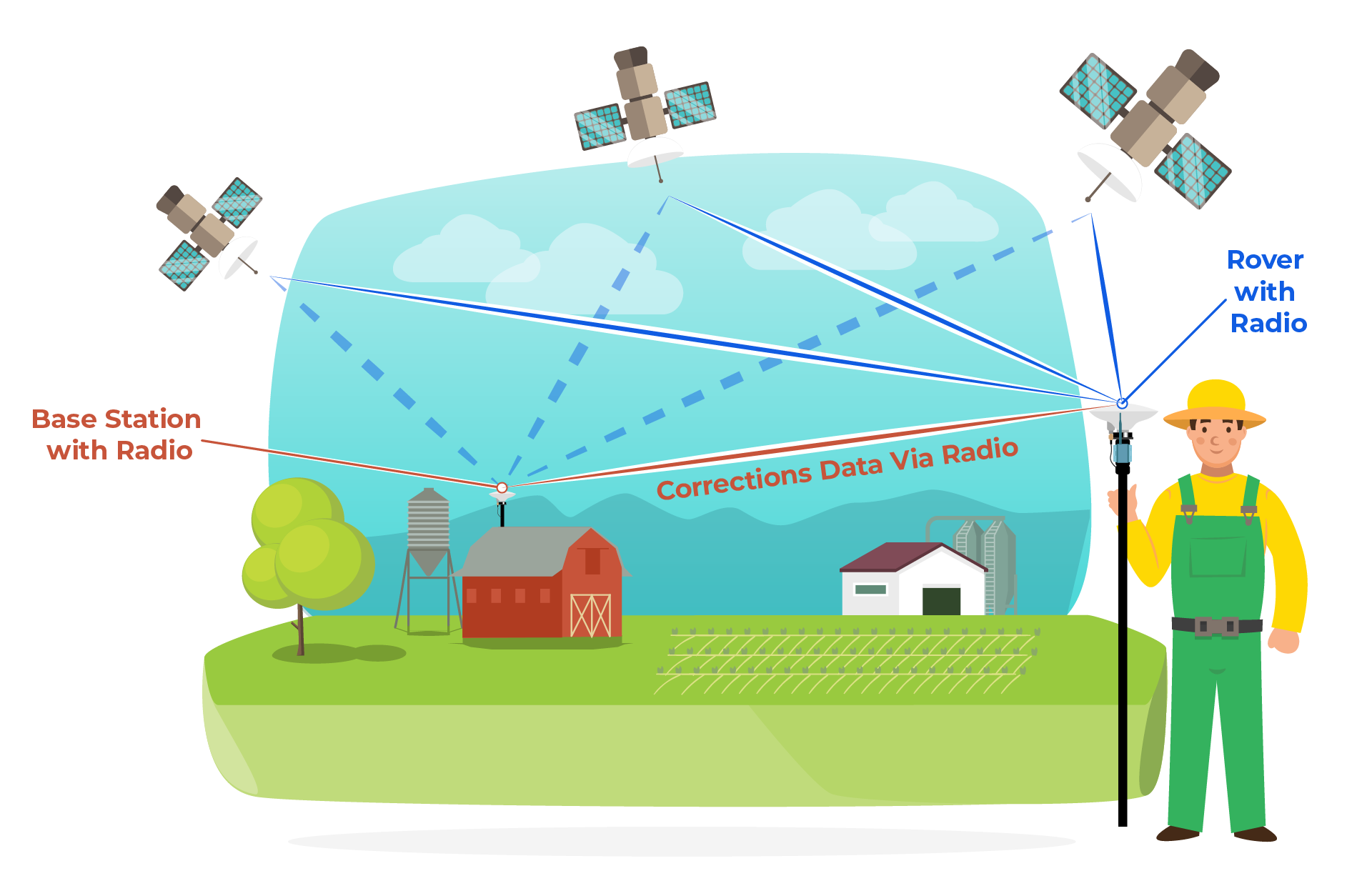
Paid Permanent Base + Rover + Cellphone
If you don't have a base station, or don't want to maintain one, you can use services like u-blox's PointPerfect, Skylark, Point One or other services to get correction data over the Internet and deliver it to your rover using your cellphone's internet connection.
Based on the location of your rover, your cellphone can receive correction data from an existing nearby base station where corrections are sent to the Internet (NTRIP Network) and then passed on to your phone over the cellular network. Your cell phone then communicates the correction data (via Bluetooth or WiFi) to your rover.
Pros:
- Absolute accuracy
- Fast fix times
- Large network of base stations
Cons:
- Base stations may be further away from rover
- Not quite as accurate as base station
- Usually monthly subscription based
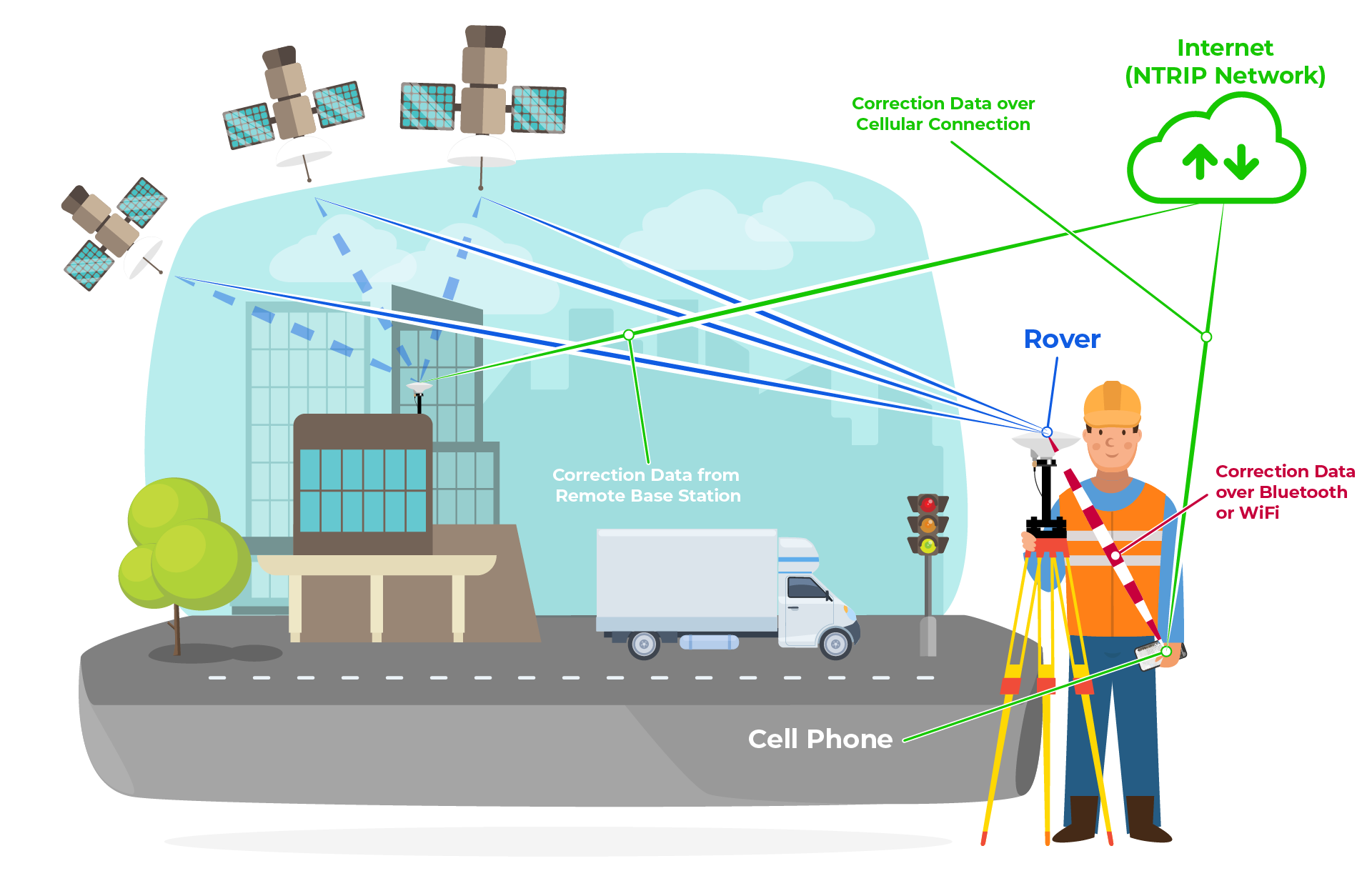
L-Band Rover
This method is really great for all uses, but it especially comes in handy when you need highly-accurate positioning in more remote locations without cell service and/or you don't have a base station close enough to receive corrections data.
Rovers with an L-Band antenna (and a monthly subscription) can receive RTK correction data from a geosynchronous Inmarsat Satellite without the need for a base station. Currently, SparkFun uses the ublox NEO-D9S module for this method. This includes the RTK Facet L-Band which is an all-in-one, enclosed device that can receive normal GNSS reception as well as the the L-Band reception needed to receive correction data. You can learn more about how all this works in our RTK Facet Hookup Guide.
Pros:
- Absolute accuracy
- No need for base station
Cons:
- Only works in the 48 contiguous states and Europe
- Subscription required for L-Band use
- Slower fix times (~45 seconds)
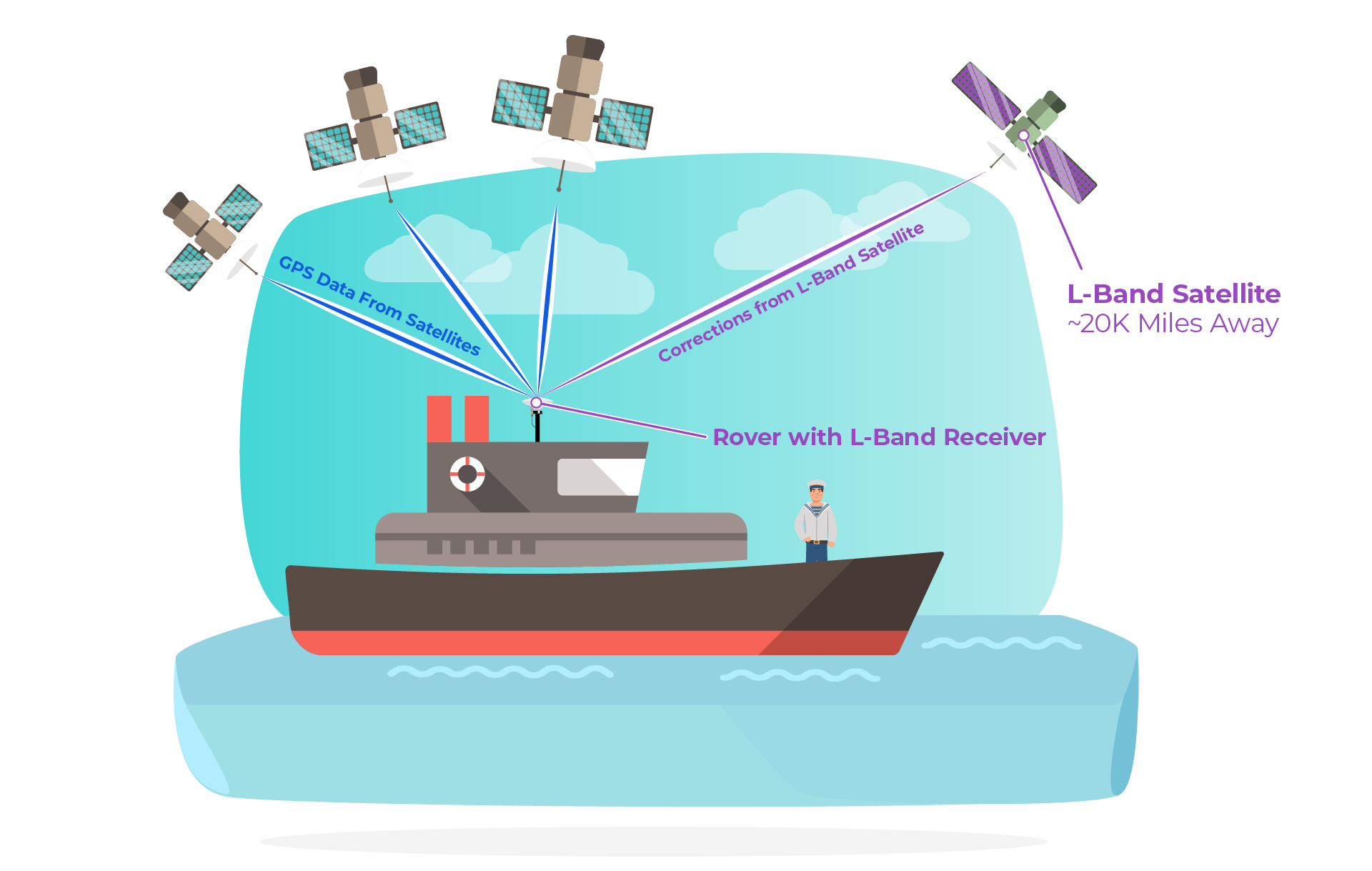
RTK Accessories
Based on which use case you use for your RTK positioning, you'll need some accessories to make it all work. Below are some commonly bought items to go along with your RTK setup.
Helpful Resources Using RTK
Learn how to build a reference station, set up a rover base and learn more about RTK with our helpful resources below.
Getting Started with u-blox Thingstream and PointPerfect
January 23, 2023
Interested in high precision GNSS without setting up a base station?
How to Build a DIY GNSS Reference Station
October 15, 2020
Learn how to affix a GNSS antenna, use PPP to get its ECEF coordinates and then broadcast your own RTCM data over the internet and cellular using NTRIP to increase rover reception to 10km!
Setting up a Rover Base RTK System
October 14, 2020
Getting GNSS RTCM correction data from a base to a rover is easy with a serial telemetry radio! We'll show you how to get your high precision RTK GNSS system setup and running.
What is GPS RTK?
September 14, 2018
Learn about the latest generation of GPS and GNSS receivers to get 14mm positional accuracy!
Getting Started with U-Center for u-blox
September 13, 2018
Learn the tips and tricks to use the u-blox software tool to configure your GPS receiver.
